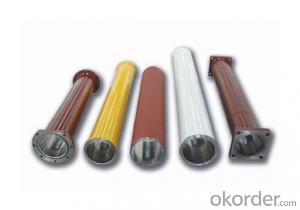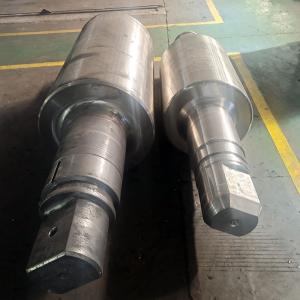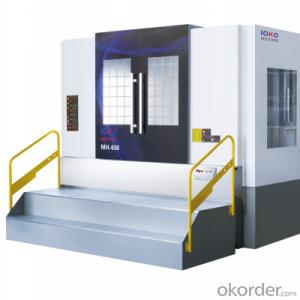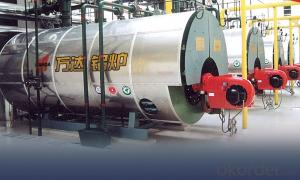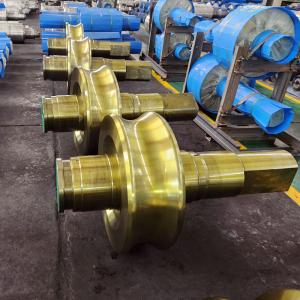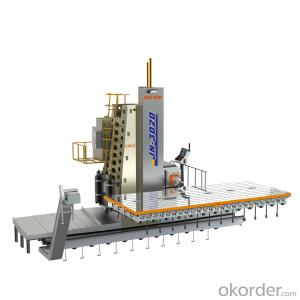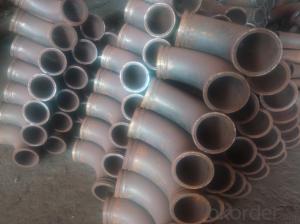PUMPING CYLINDER(SANY ) I.D.:DN180 CR. THICKNESS :0.25MM-0.3MM LENGTH:1530MM
- Loading Port:
- Shanghai
- Payment Terms:
- TT OR LC
- Min Order Qty:
- 2 pc
- Supply Capability:
- 1000 pc/month
OKorder Service Pledge
OKorder Financial Service
You Might Also Like
Product Description:
The Concrete Pump Delivery Cylinder normally made by steel material No. C45. according to customer’s requests, and also package in bundles or nude packing directly put into container.
Scope of Application of the Cylinders
The Pump Delivery Cylinder is a concrete pumping for combined use with other concrete pumps in concrete pumping operations. It can be widely used in the construction of various types of concrete structures like industrial and civil buildings, bridges, roads, and other types of infrastructure.
This Cylinder can only be used in concrete pump construction operations, but not in any other operations, like dragging, moving, or hoisting heavy articles or personnel. The pipe is also not allowed to be used in any location where any combustible or explosive material exists or a cave-in may occur.
Specifications:
Concrete Pump Delivery Cylinder DN180*1530
1. Capacity: 60,000~80,000cbm
2. Size: DN180, DN200, DN230..
4. Brand: SANY
5. Material: C45
6. Quenching and tempering to improve the hardness to HB241-280
7. Inner wall chrome thickness is 0.25-0.30mm, hardness HV820-900.
Product Advantages:
OKorder's Cylinders Channels are durable, strong, and safety.
Main Product Features:
· Premium quality
· Prompt delivery & seaworthy packing (10-20 days)
Reliable performance
Easy to weld
High safety.
· Professional Service
· Competitive pricing
Measuring of wall thickness from the outside
Low purchase cost
FAQ:
Q1: How long about delivery time?
A1: Normally we keep the raw materials for old customers and sometime we also keep stock products to make sure delivery time in any emergency cases.
Q2: How do we guarantee the quality of our Cylinders?
A2: We have established an advanced quality management system which conducts strict quality tests at every step, from raw materials to the final product. At the same time, we provide extensive follow-up service assurances as required.
Q3: How soon can we receive the product after purchase?
A3: Within three days of placing an order, we will book the vessel for goods. The specific shipping date is dependent upon international and government factors, but is typically10 to 30 workdays.
Q4: If we can produce some Cylinders according to customers request?
A4: Yes, we can produce Cylinders according to the difference country situations to make it suitable to the market and customers. We have very professional technical team to make the design.
Q5: How to make a quick resolution for after service?
A5: OKorder and our manufacture both have overseas branches all-around of world, If needed,
Concrete Cylinder | ||
Material | High Manganese Steel | |
Special | Coating hardness layer in the internalwall | |
Application | In concrete pump trucks | |
For Brand | Sany,Putzmeister,Schwing,,Zoomlion,CIFA etc | |
Details information | ||
Brand | Model | |
219 - DN180*1775-1600 | ||
Schwing | BP3000 | 219 - DN200*1775-1600 |
254 - DN230*2125-1800 | ||
DN230*2300mm | ||
DN230*2100mm | ||
Putzmeister | DN230*1600mm | |
DN200*1600mm | ||
DN180*2000mm | ||
40C1410 | 206-DN180*1530-1400 | |
50C1410 | 210- DN180*1545-1400 | |
60A1406 | 219- DN195*1570-1400 | |
Sany | 60C1416 | 226- DN195*1570-1400 |
60C1816 | 232- DN200*1946-1800 | |
C120/37A | 232- DN200*2162-2000 | |
C120/48 | 262- DN230*2146-2000 | |
62EA | 203-DN 180*1605-1400 | |
62G | 219-DN200*1187-1000 | |
62D | 219-DN200*1587-1400 | |
Zoomlion | 62H | 219-DN200*1787-1600 |
62CA | 219-DN200*1862-1600 | |
62M | 219-DN200*2022-1800 | |
0019931A | 219-DN200*2022-1800 | |
62L | 245-DN205*2284-2000 | |
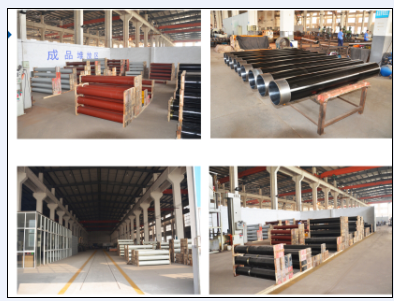
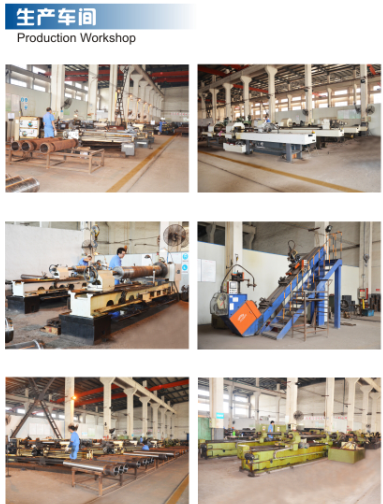
- Q:How do I ensure the reliability of concrete pump spare parts in critical applications?
- To ensure the reliability of concrete pump spare parts in critical applications, there are several steps you can take. 1. Choose reputable suppliers: Purchase spare parts from trusted and reliable suppliers who have a proven track record in the industry. Look for suppliers who specialize in concrete pump spare parts and have a good reputation for quality. 2. Conduct thorough research: Before making a purchase, research the specific spare parts you need and learn about their quality, durability, and performance. Read customer reviews and seek recommendations from industry professionals to ensure you are selecting the most reliable parts for your critical application. 3. Opt for genuine parts: Whenever possible, choose genuine spare parts provided by the original equipment manufacturer (OEM). These parts are specifically designed to fit and function with your concrete pump, ensuring optimal performance and reliability. 4. Regular maintenance and inspections: Implement a regular maintenance schedule and conduct thorough inspections of your concrete pump and its spare parts. This will help identify any potential issues or wear and tear before they become critical problems. 5. Quality control and testing: Before using new spare parts, conduct quality control checks and testing to ensure they meet the required standards. This can involve inspection of materials, dimensional checks, and performance testing to ensure reliability in critical applications. 6. Keep spare parts inventory: Maintain an adequate inventory of essential spare parts to minimize downtime in case of any failures. This will allow for timely replacement and reduce the chances of using substandard or counterfeit parts in critical applications. By following these steps, you can enhance the reliability of concrete pump spare parts in critical applications and minimize the risk of unexpected failures.
- Q:What is the function of a concrete pump water pump?
- The function of a concrete pump water pump is to supply water to the concrete pump system, aiding in the smooth and efficient operation of the equipment.
- Q:How often should concrete pump hydraulic oil coolers be inspected and maintained?
- Concrete pump hydraulic oil coolers should be inspected and maintained regularly to ensure optimal performance and prevent potential issues. The frequency of inspections and maintenance will depend on various factors such as the operating conditions, the workload of the pump, and the manufacturer's recommendations. As a general guideline, it is recommended to inspect and maintain concrete pump hydraulic oil coolers at least once every six months or every 500-700 operating hours, whichever comes first. However, in more demanding or extreme operating conditions, more frequent inspections and maintenance may be necessary. During these inspections, it is important to clean the cooler thoroughly and check for any signs of damage, corrosion, or leaks. Additionally, the oil cooler fins should be inspected for any blockages, as debris or dirt can reduce the cooler's effectiveness. Regularly checking and replacing the cooler's air filters is also crucial to maintain proper airflow and prevent overheating. Regular maintenance should include replacing the hydraulic oil and filters according to the manufacturer's recommendations. This helps to maintain the oil's viscosity and prevent any contaminants from damaging the cooler or other hydraulic components. In summary, it is essential to inspect and maintain concrete pump hydraulic oil coolers regularly to ensure efficient operation and prolong their lifespan. Following the manufacturer's guidelines and considering the specific operating conditions will help determine the appropriate frequency for inspections and maintenance.
- Q:What are the different types of concrete pump hopper cylinders?
- In the construction industry, there exists a variety of concrete pump hopper cylinders that are commonly utilized. These cylinders possess a vital function in the operation of concrete pumps, as they supply the necessary pressure and force to facilitate the movement of concrete throughout the system. One particular kind of concrete pump hopper cylinder is the single-acting cylinder. This cylinder operates by utilizing hydraulic pressure to extend the piston rod, which subsequently propels the concrete out of the hopper and into the pumping system. Single-acting cylinders are renowned for their simplicity and reliability, thus making them a favored choice for numerous construction projects. Another type of concrete pump hopper cylinder is the double-acting cylinder. As the name implies, this cylinder operates in both directions, enabling a more efficient and powerful pumping process. Double-acting cylinders possess the capability of pushing the concrete out of the hopper during the extension stroke, as well as pulling the piston rod back during the retraction stroke. Consequently, this results in a greater pumping capacity and increased productivity. Furthermore, there is also a range of sizes and capacities available for concrete pump hopper cylinders. These sizes vary, with smaller cylinders suitable for smaller construction projects, and larger cylinders capable of handling heavy-duty pumping operations. The selection of cylinder size relies on factors such as the volume of concrete to be pumped, the distance and height of the pumping location, and the specific requirements of the project. In conclusion, the assortment of concrete pump hopper cylinders encompasses single-acting cylinders and double-acting cylinders. Each type possesses its own advantages and is suitable for different construction applications. The determination of the cylinder's size and capacity should be based on the specific necessities of the project. Ultimately, the selection of the appropriate cylinder type is essential in guaranteeing efficient and effective concrete pumping operations.
- Q:How often should concrete pump pistons be replaced?
- The replacement frequency for concrete pump pistons depends on several factors, including usage, maintenance, and piston quality. It is generally advised to regularly inspect the pistons for signs of wear and tear, such as cracks, pitting, or scoring. If any of these signs are detected, it is recommended to replace the pistons immediately to prevent potential failures or leaks. Concrete pump pistons typically last between 25,000 and 75,000 cubic yards of pumped concrete, although this can vary depending on specific conditions and operating practices. For example, if the concrete being pumped contains abrasive materials or if the pump is used intensively or under harsh conditions, the pistons may wear out more quickly. Furthermore, proper maintenance practices can prolong the lifespan of the pistons. This includes regular cleaning and lubrication, maintaining the pump in good condition, and ensuring the pistons are correctly aligned and not subjected to excessive pressure or stress. In conclusion, closely monitoring the condition of the pistons and referring to the manufacturer's recommendations or seeking advice from a professional is essential to determine the appropriate replacement interval for the specific concrete pump being utilized.
- Q:What is the function of a concrete pump remote control?
- A concrete pump remote control serves as a tool to operate and control the functions of a concrete pump from a distance. It allows the operator to manipulate various aspects of the pump's operation, such as starting and stopping the pumping process, adjusting the speed and direction of the pump, and controlling the placement and flow of the concrete. By providing remote control capabilities, it eliminates the need for the operator to be physically close to the pump, allowing for safer and more efficient operation. Additionally, the remote control often includes features such as emergency stop buttons, diagnostics, and data logging capabilities, which further enhance the functionality and reliability of the concrete pump. Overall, the function of a concrete pump remote control is to provide convenience, precision, and safety in the operation of concrete pumping equipment.
- Q:Can concrete pump spare parts be installed by the pump owner or operator, or is professional assistance required?
- The pump owner or operator has the option to install concrete pump spare parts themselves, but it is strongly advised to seek professional help. The installation of these spare parts necessitates technical expertise and know-how to guarantee correct and effective installation. By opting for professional assistance, one can ensure that the spare parts are accurately installed, reducing the possibility of any damage or malfunction. Moreover, professionals possess the essential tools and equipment to safely and efficiently carry out the installation procedure. By investing in professional assistance, not only is a successful installation guaranteed, but it also contributes to the long-term durability and optimal functioning of the concrete pump.
- Q:How can a faulty pressure gauge affect the concrete pumping process?
- A faulty pressure gauge can have significant impact on the concrete pumping process. It can lead to inaccurate measurements of the pressure within the pump, which can result in improper monitoring and control of the pumping process. This can lead to over or under pressurization, affecting the flow and consistency of the concrete being pumped. Additionally, a faulty pressure gauge may not provide reliable readings, making it difficult to detect any potential issues or abnormalities in the pumping system, which can compromise the quality and integrity of the concrete being pumped.
- Q:How do I properly maintain and replace hydraulic cylinders in concrete pump spare parts?
- Proper maintenance and replacement of hydraulic cylinders in concrete pump spare parts requires a systematic approach. Firstly, regular inspections should be conducted to identify any signs of wear, leakage, or damage. It is important to clean the cylinders regularly to remove any debris or contaminants that can cause premature failure. To maintain the hydraulic cylinders, it is crucial to follow the manufacturer's recommendations for lubrication and fluid changes. Ensure that the hydraulic fluid levels are checked and maintained within the specified range. Additionally, monitor the pressure and temperature of the system to detect any abnormal conditions that may indicate a problem with the cylinders. When it comes to replacement, it is essential to use genuine and high-quality hydraulic cylinders that meet the specifications of the concrete pump. Consult the manufacturer's guidelines for the correct procedure for removing and installing the cylinders. Proper alignment and adjustment of the cylinders are crucial to ensure their optimal performance and longevity. In summary, proper maintenance involves regular inspections, cleaning, lubrication, and monitoring of the hydraulic system. Replacement should be done with genuine parts and following the manufacturer's guidelines. By following these steps, you can ensure the reliable and efficient operation of hydraulic cylinders in concrete pump spare parts.
- Q:How often should hopper grate clamps be inspected or replaced in a concrete pump?
- Hopper grate clamps in a concrete pump should be inspected regularly, preferably on a monthly basis, to ensure they are in proper working condition. However, the frequency of inspection may vary depending on the usage and operating conditions of the concrete pump. If the concrete pump is used extensively or subjected to harsh environments, more frequent inspections may be necessary, such as every two weeks or even weekly. On the other hand, if the pump is used less frequently or operates in less demanding conditions, inspections can be done less frequently, such as every two to three months. The purpose of these inspections is to identify any signs of wear, damage, or deterioration in the hopper grate clamps. Any loose or worn-out clamps should be promptly replaced to prevent accidents or disruptions during concrete pumping operations. It is crucial to prioritize safety and ensure that the hopper grate clamps are in good condition to secure the hopper grate effectively and prevent any unwanted material spillage. Regular inspections and timely replacements of hopper grate clamps will help maintain the efficiency and reliability of the concrete pump, ensuring uninterrupted operation and minimizing the risk of any potential issues.
1. Manufacturer Overview |
|
|---|---|
| Location | |
| Year Established | |
| Annual Output Value | |
| Main Markets | |
| Company Certifications | |
2. Manufacturer Certificates |
|
|---|---|
| a) Certification Name | |
| Range | |
| Reference | |
| Validity Period | |
3. Manufacturer Capability |
|
|---|---|
| a)Trade Capacity | |
| Nearest Port | |
| Export Percentage | |
| No.of Employees in Trade Department | |
| Language Spoken: | |
| b)Factory Information | |
| Factory Size: | |
| No. of Production Lines | |
| Contract Manufacturing | |
| Product Price Range | |
Send your message to us
PUMPING CYLINDER(SANY ) I.D.:DN180 CR. THICKNESS :0.25MM-0.3MM LENGTH:1530MM
- Loading Port:
- Shanghai
- Payment Terms:
- TT OR LC
- Min Order Qty:
- 2 pc
- Supply Capability:
- 1000 pc/month
OKorder Service Pledge
OKorder Financial Service
Similar products
New products
Hot products
Related keywords
